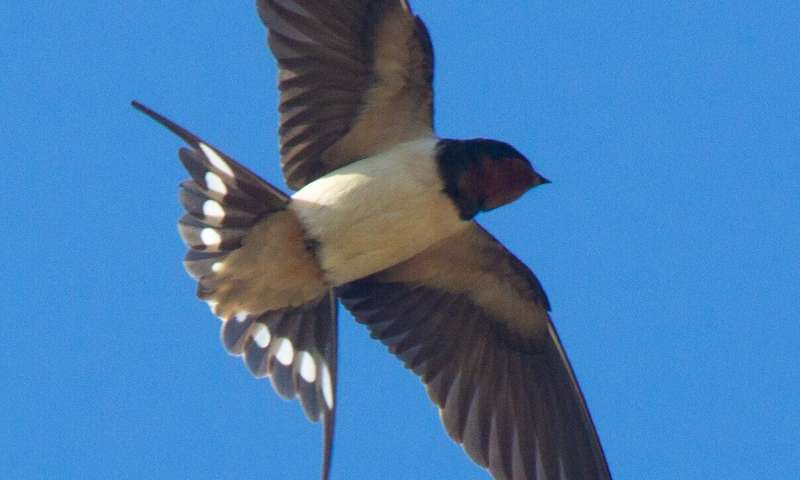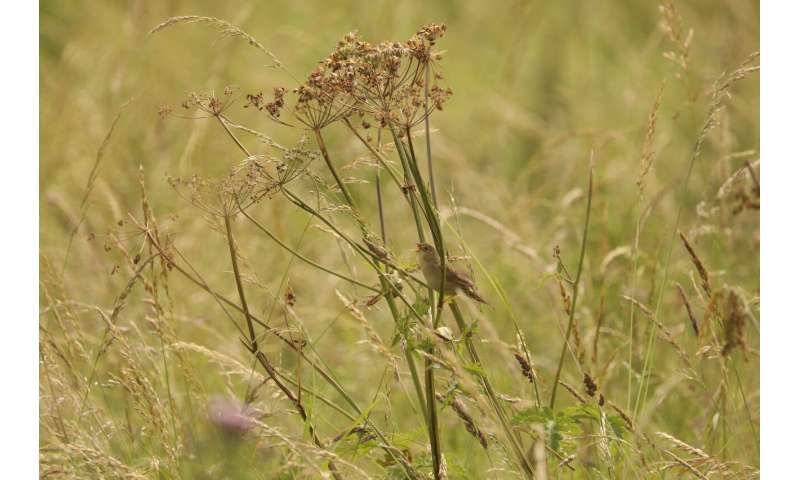
A new study led by the Department of Biosciences at Durham University, UK, is the first large-scale assessment of how recent changes in both climate and land cover have impacted populations of migrating birds.
Global declines in the numbers of individuals of many migratory species are thought to be caused by a combination of climate change and habitat loss on both their breeding and non-breeding grounds, as well as changes to areas they use to refuel whilst on migration. Understanding of which factors are key in causing recent declines, and in which areas changes are having most impact, remains poor.
Using data on the long-term population trends of 61 short- and 39 long-distance European breeding migratory birds, the researchers related changes in climate and land cover across their breeding and non-breeding grounds over a 36-year period to their population trends.
The study showed that populations of migratory birds were most affected by changes in climate on the European grounds where they stopped to breed but, in the areas that they migrate to after the breeding season, changes in land cover had the greater impact.
The combined effects of changes in climate and land cover account for approximately 40 percent of the variation in the population trends of migratory birds, which means that other factors, such as changes in habitat quality, probably also have a substantial impact on population changes.

Professor Stephen Willis, who led the study, said: "For years, people have suspected that climate and land cover changes are major drivers of population trends of migratory birds.
Here we show, for the first time that for long distance migrants moving between Europe and Africa, it is a combination of European climate change and African land cover change that are key to the population declines of many such species over recent decades.
"In the UK, we have seen major declines in many migratory bird species that come here to breed from their African wintering grounds. For example, the Turtle Dove has declined by 95% between 1992-2017, and the Nightingale has declined by 56% between 1995—2018."
Lead author, Dr. Christine Howard added: "The relatively minor role of recent climate changes on African non-breeding grounds for long distance migrants was surprising but probably reflects the less extreme climatic changes there compared to Europe.
"The fact that a lot of variation in population trends remain unexplained in our study suggests that other factors, such as agricultural intensification, are probably also impacting populations, along with changes at migratory stopping points, including hunting."
The researchers say that to stop the declines of European migrant birds, an integrated approach must consider all processes affecting them across the different grounds they inhabit throughout the year.
Explore further
Citation: Changes in climate and land cover affecting European migratory bird populations (2020, August 14) retrieved 14 August 2020 from https://ift.tt/2XZNZj5
This document is subject to copyright. Apart from any fair dealing for the purpose of private study or research, no part may be reproduced without the written permission. The content is provided for information purposes only.
"bird" - Google News
August 14, 2020 at 11:51PM
https://ift.tt/2XZNZj5
Changes in climate and land cover affecting European migratory bird populations - Phys.org
"bird" - Google News
https://ift.tt/2s1zYEq
https://ift.tt/3dbExxU
Bagikan Berita Ini














0 Response to "Changes in climate and land cover affecting European migratory bird populations - Phys.org"
Post a Comment